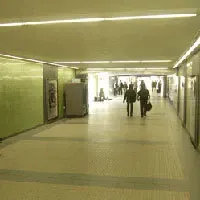By the Sound of Things: The Sound Circuit Project
Written by

By Mark Amery Courtesy of The Dominion Post
Remove your headphones for a moment and listen up. Or more precisely, listen out. Your Ipod or stereo has two contrary but mutual functions: it plays you music and it blocks out unwanted noise. Yet in-between is something worth paying attention to. Something we simply label sound.
Not identified in its arrangement as music, yet no longer simply noise, this is the aural region explored by sound artists. While visual artists attune us to beauty and meaning in the world primarily through the arrangement of objects, these artists do so through the arrangement of the sound of things. By Mark Amery Courtesy of The Dominion Post
Remove your headphones for a moment and listen up. Or more precisely, listen out. Your Ipod or stereo has two contrary but mutual functions: it plays you music and it blocks out unwanted noise. Yet in-between is something worth paying attention to. Something we simply label sound.
Not identified in its arrangement as music, yet no longer simply noise, this is the aural region explored by sound artists. While visual artists attune us to beauty and meaning in the world primarily through the arrangement of objects, these artists do so through the arrangement of the sound of things.Where sound art sits in our culture is demonstrated by this column's label: visual arts. It's a peripheral activity, straddling a no-man's land between art and music. Yet it's concerns have never been closer to the cultural centre if we are to consider the rise of so-called post-object art practice on the one hand, and ever increasing experimentation in music on the other.
Sound art has a strong history in New Zealand and, as our living environments get noisier and our personal electronic devices ever more powerful, it surely also has an increasing relevance. An area of play beyond the functional that makes us better aware of our environment and our place in it.
Welcome then is Sound Circuit, four temporary sound projects commissioned by the Adam Art Gallery taking place in public spaces over the next month. Sound Circuit is part of the gallery's Sound Check programme, which over the next three years seeks to "canvas the history and current state of sound/art in New Zealand."
First up, New York based New Zealander Dion Workman has been conducting events with a group of players in different inner-city locations over the last week. The time and location of these events aren't advertised. Indeed, you may not even be aware they're occurring if you happen upon one. You might however perceive something different in the air; and find your awareness of the space you're in change accordingly. It is what the art world neatly calls an intervention.
In order to observe them I was accorded the privilege of information on times and locations. The first was in Wellington railway station. Passing through during the thirty minute performance people may have discerned a harmony of high toned ringing above in the vaulted spaces. My first instinct was to look to the tannoy speakers, and to start to question whether the chant "The next train to Paraparaumu - " and other sounds might be part of the soundscape.
Gradually however I become aware of the players dotted around, moving very slowly through the space. They shifted meditatively, rubbing the rims of what resemble small brass mortars or bowls with pestles to produce a pleasing drone that is amplified in the spaces beyond themselves.
The objects are small Rin Gongs, or Singing bowls, a type of bell traditionally used throughout Asia in Buddhism prayer and meditation. Here they are effective in stilling the traveler, taking you into a place of being in a space you usually choose simply to pass through. The effect is both magical and disquieting.
Monday lunchtime some of you in the CBD might have been disturbed by a high pitched buzzing for which you could find no source. I followed a pack of players in a zig zag down major and minor thoroughfares. Each player had some kind of transmitter in their pocket contributing to a drone in the air, like a cloud of unseen cicadas.
Unlike the Rin Gong this wasn't a pleasant noise, rather part of the family of electronic drones, beeps and chimes the city is full of. I watched people pull at their ears, look skyward, mutter to each other, or alternately seem to just accept the sound as part of the city's aural fabric. The players walk casually, imperceptible as performers amongst the general tide of people walking at lunchtime. They operate as a tribe known only to themselves, sensing the tyranny they are enforcing on those around them. While this work also delightfully focuses us in on the behaviour of people in public spaces, what made it particularly powerful was how it tuned into how insidious the sounds from personal mobile systems are in clouding out our environment.
The descriptions of the other works in Sound Circuit suggest it's a smartly curated series (rather than the more typical grab-bag of sound art you get at festivals). All interact with the movement of the city and rely principally on aural sources and their amplification.
Between 29 March and 20 April Dugal McKinnon's installation Geophony will provide a fault line of sound through the architecture of Victoria University's Rutherford House, based on the translation into sound of real-time seismic data. Over the same period Rachel Shearer will have an ambient soundscape installed in the nearby foot tunnel that runs into the railway station. Then from 31 March through to 18 April Kaleb Bennett will be employing a team of volunteers to drive around vehicles customised with internal and external speakers. Listen out for it and enjoy what sounds you appreciate anew.
19/03/08